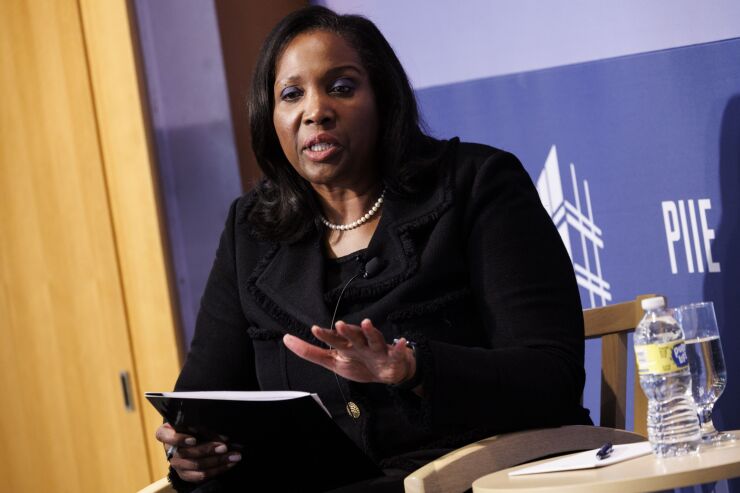
Housing costs appear to be the final hurdle between the Federal Reserve and its goal of bringing inflation back down to its 2% target, and the issues there are likely to get worse before they get better.
Because of how
The Boston Fed projects the core readings — those without volatile food and energy categories — of the consumer price index, or CPI, and the personal consumption expenditures, or PCE, will rise by 0.74% and 0.29%, respectively, during the next 12 months because of greater housing costs. Meanwhile, market rents, as tracked by the analytics firm CoreLogic, were up just 3% year-over-year in April, well below the COVID-19 era-high of more than 13% and on par with their pre-pandemic average.
Fed officials
Both CPI and PCE measure the cost of housing — also referred to as shelter — through changes in rental prices. But, because more than 65% of homes in America are owner-occupied, these indexes attempt to incorporate owned homes through what is known as owners' equivalent rent or imputed rent, which are estimates of what a homeowner would pay for their homes if they were renting.
For most homeowners, their housing costs — particularly their monthly
Imputed rent accounted for roughly 76% of the overall housing category within the PCE index, which is tracked by the Bureau of Economic Analysis. Actual rents paid by tenants of non-farm housing makes up about 22%. From March 2022 through December 2023, owners' equivalent rents rose roughly 15% while tenant rents rose 13.9%. Overall housing costs were up 14.7% during that period.
Other countries approach housing cost measurements differently. The European Central Bank does not include owner-occupied housing costs in its inflation tracker, the Harmonized Index of Consumer Prices. The CPI readings used by the Bank of England and the Bank of Canada both include ownership costs such as mortgage interest, insurance and renovations, rather than asking homeowners to estimate a rental value for their properties.
Louise Sheiner, an economic studies fellow at the Brookings Institution, said trying to measure housing costs in a uniform way is difficult, which is why different jurisdictions approach it differently.
CPI and PCE include owners' equivalent rent to account for the consumptive costs homeowners face, Sheiner explained, though she noted that in the current environment, in which home values are continuing to rise, the measure does not accurately reflect the impact of inflation on those homeowners.
"It is conceptually fine how they do it, but it also might put a little bit less weight on inflation by homeowners who are perfectly indexed," she said. "They own the home so both their income goes up and, at the same time, their implicit rent goes up too, so they're not worse off at all."
Fed Gov. Lisa Cook also highlighted difficulties in tracking housing costs during a speaking engagement with the Economic Club of New York in June, noting that incorporating costs in areas where homes are predominantly owned rather than rented was one of the "big measurement problems" related to inflation.
Yet, Cook noted that the National Academies of Science, Engineering and Medicine have endorsed factoring some version of owners' equivalent rent into consumer pricing indexes.
"Including [owners' equivalent rent] is a defensible thing to do," she said.
Cook added that regardless of how other central banks measure housing costs, the Fed's go-to reading has long included imputed rent, so it cannot change its measure now.
"Not every European central bank, in its calculation of inflation, includes housing in that measure, so there's a lot of heterogeneity and ours is the PCE index that we pay attention to," she said.
Still, regardless of how inflation is measured, some economists say there has been enough progress on other parts of the economy to warrant an interest rate cut. The latest CPI report shows inflation rose 3.3%, driven largely by shelter, which was up 5.4% over the previous year. Similarly, PCE, which gives housing less weight, was up 2.6% on the year, with housing accounting for an outsized portion of the growth.
While conventional wisdom suggests that an interest rate cut would spur demand for home purchases, thus driving up prices more, Nancy Vanden Houten, a senior economist at Oxford Economics, said lowering rates is essential to expanding the supply of both for sale and rental homes throughout the country.
"The more we see progress on these other components of inflation, the Fed might have the freedom to look at housing a little bit differently," Vanden Houten said. "High rates further constrain supply in the housing market, which is one of the key things propping up prices. If you want more supply and some softening in home price growth, lower interest rates would help in that regard."






